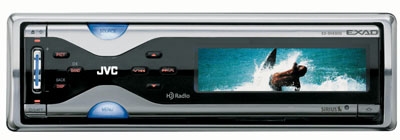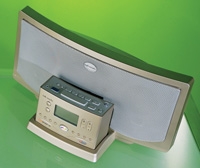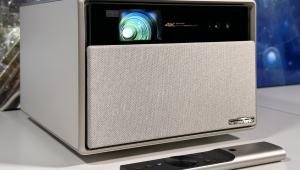HD Radio: Ready for Prime Time? Page 2
| Where the Stations Are There are 931 stations in the U.S. licensed to broadcast HD Radio, with 518 stations now on the air. Major metropolitan areas with at least five HD stations include: | |
| • Albany/Schenectady/ Troy, NY (5) • Albuquerque, NM (5) • Atlanta, GA (18) • Baltimore, MD (6) • Birmingham, AL (9) • Boston, MA (15) • Charlotte, NC/Gastonia, NC/Rock Hill, SC (5) • Chicago, IL (20) • Cincinnati, OH (11) • Cleveland, OH (5) • Columbus, OH (5) • Dallas/Ft. Worth, TX (16) • Dayton, OH (6) • Denver/Boulder, CO (11) • Detroit, MI (19) • Fresno, CA (6) • Hartford/New Britain/Middletown, CT (6) | • Indianapolis, IN (15) • Kansas City, MO & KS (6) • Los Angeles, CA (19) • Memphis, TN (5) • Miami/Ft. Lauderdale/ Hollywood, FL (16) • Minneapolis/St.Paul, MN (6) • New York, NY (14) • Orlando, FL (5) • Philadelphia, PA (13) • Portland, OR (11) • Rochester, NY (7) • San Francisco, CA (15) • Seattle/Tacoma, WA (13) • St. Louis, MO (6) • Tampa/St. Petersburg / Clearwater, FL (5) • Washington, DC (12) |
| For a complete list, go to ibiquity.com/hdradio/hdradio_hdstations.htm | |
 | |
BATTLING THE SATELLITES Broadcasters aren't going digital out of the goodness of their hearts. The average cost of adding HD is $75,000 to $100,000 per station, and the stations probably wouldn't be spending that money if it wasn't for competition from satellite radio. HD lets stations match satellite radio's digital sound and its ability to display program information.

But FM and AM stations can't compete with the program diversity of XM and Sirius satellite radio, which each carry more than 100 channels. (And maybe they don't want to. Just note how limited the programming is on your local stations and how many stations share the same basic formats.) If you want to hear sports, classical, bluegrass, jazz, liberals, conservatives, financial news, and old-time radio, Sirius or XM can provide it wherever you are - which isn't true of terrestrial radio anywhere, even in major cities like Los Angeles and New York City.
But HD could increase the diversity of local radio programming. Once enough of the audience is listening in HD, AM stations might start programming music again, rather than ceding it to FM stereo's superior sound. Multicasting would let stations that switch formats keep their existing audience by continuing the old format on a secondary channel. Public radio, which has a substantial number of listeners for both talk and music, could choose to run both at once - and run niche programs such as documentaries without taking more popular ones off the air.
For niche programming, though, neither terrestrial nor satellite broadcasters can match podcasting, the Internet distribution of audio programs for downloading to iPods and other digital portables. Internet radio has been around for years, but digital players made it portable. Once that happened, anyone with a computer, a microphone, and a viewpoint could create programs for free distribution to anyone, anywhere, who wants to hear them. The Diffusion Group estimates that some 4.5 million people currently listen to podcasts and predicts that number will increase tenfold by 2009.
But that doesn't mean terrestrial radio's going away, says Robert Struble, iBiquity's CEO. "Look at the numbers: You have 7 or 8 million people listening to satellite and a few million listening to podcasts. But you have 240 million people listening to AM and FM radio every week. It's unrealistic to compete against those new entrants using analog technology, but we believe digital will give listeners what they need: more choice, better performance, more interactivity."
Adds Michael Starling, vice president for engineering and operations at National Public Radio, "When it comes to the digital audio revolution, radio broadcasting may appear to be the last horse out of the gate. But you haven't seen anything yet. Over the next two years, radio is really going to get into the revolution. If you love audio, you're going to love what's coming."
- Log in or register to post comments



































































